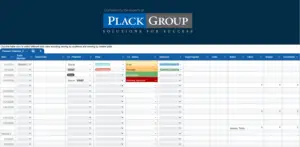Many business owners expect to sell their business to fund their retirement. However, it’s always a good idea to put away money for retirement. Unexpected changes are liable to happen at any point. Retirement planning will account for some of the potential changes in your finances or in the market.
Solo 401(k)
Who: Sole proprietors with no employees (Spouses who earned money may be included).
How much: You can contribute up to $16,500 as an employee, and as an employer, you can contribute another 25% of compensation, up to $49,000. (Add an additional $5,500 if you’re over 50).
Solo 401 (k)s are similar to traditional 401(k)s or SEP IRAs; however, they are only for sole proprietors with no employees.
Taxation: Contributions are not taxable. The Roth version is largely the same. There isn’t an upfront tax break, but the money grows tax deferred and withdrawals aren’t taxable.
SEP IRA:
Who: Any business owner with one or more employees, or anyone with freelance income.
How Much: up to 25% of income or $49,000, whichever is less.
Employees: Employees can participate if over 21 worked for company in 3/5 years, received at least 550 in compensation. Employers don’t have too fund contributions every year, but if you do, you must contribute to not only your SEP IRA, but the SEP IRA of all eligible employees.
Taxation: Not taxable until withdrawal.Keogh Plans: There are much like SEP IRAs, which have the same contribution limits but less paperwork. There are defined-contribution plans and defined-benefit plans. Defined-contribution plans come in two types: profit sharing (which is the most like the SEP IRA, with a contribution limit of 25% of compensation up to $49,000). The money-purchase plan is the same, except you choose an amount that you’ll contribute every year, and you are required to contribute that amount or else you’ll owe the IRS a penalty. The defined-benefit plan acts like a traditional pension plan, but it is self-funded. After deciding on the annual pension you want, you contribute–and deduct from your taxes–the amount you need to contribute to reach your goal.
Who: The owner of a sole-proprietorship, partnership, or LLC. Employees must be allowed to participate in the plan; however, the employer makes all the contributions.
Taxation: Not taxable until withdrawal.
SIMPLE IRA.
Who: If you choose this, the employer cannot have any other retirement plan.
How Much: As an employee, you can contribute up to $11,500. As an employer, you have to match dollar for dollar up to 3% of salary or flat 2% of pay–no matter what the employee contributes.
Employees: Employees can make contributions: As the employer, you must make a contribution on any employee’s behalf (a dollar for dollar match of up to 3% of salary or a flat 2% of pay) regardless of whether the employee contributes. Employees can contribute if they have earned at least $5,000 year during any 2 years before the plan is set up, and if they expect to earn at least 5,000 this year. In addition, it’s easy to add employees to the plan.
Taxation: Contributions are tax deductible, and investments grow tax deferred.Don’t procrastinate–get started on your retirement plan early to reap the most rewards.



